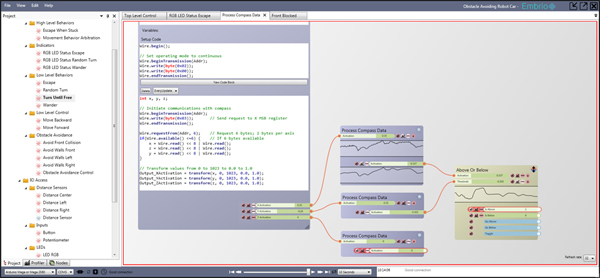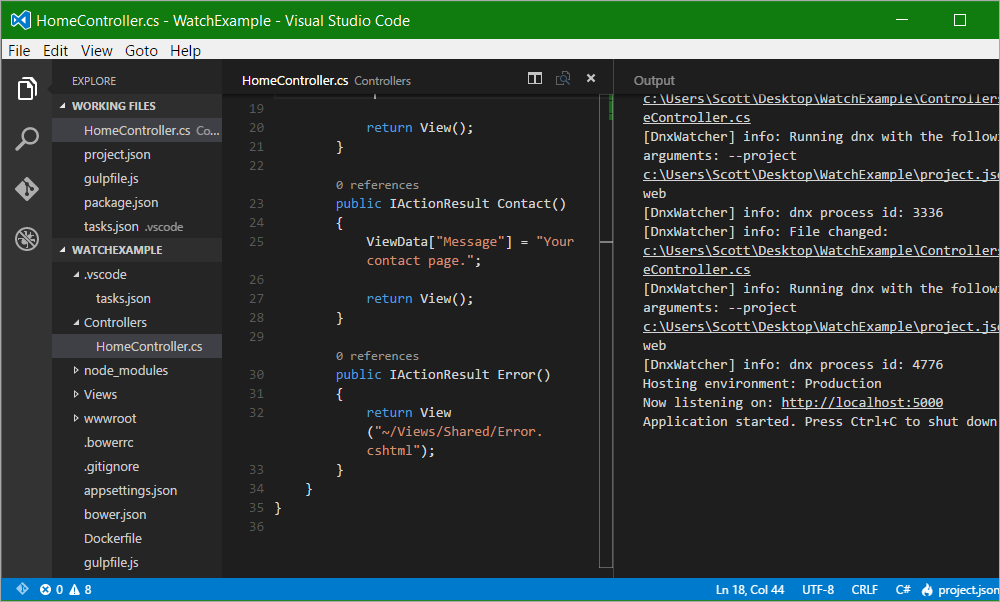Persistent performance and reliability issues in the Visual Studio for Mac IDE will be addressed by replacing most of the editor internals with code from the Visual Studio Code editor. That news comes in a blog post today (Oct. 16) announcing Visual Studio for Mac 2019 and a new roadmap. The new home for Visual Studio documentation is Visual Studio 2017 Documentation on docs.microsoft.com. The latest version of this topic can be found at Using the Visual Studio IDE for C++ Desktop Development. Last year at Build, we launched Visual Studio for Mac, our native macOS IDE for developers building cloud, web, and mobile applications using.NET. Updates have been rolling out at a steady pace ever since, and we’re excited to announce the release of Visual Studio for Mac version 7.5. Visual Studio for Mac enables you to write code accurately and efficiently without losing the current file context. You can easily zoom into details such as call structure, related functions, check-ins, and test status.
-->Visual Studio for Mac is a .NET integrated development environment on the Mac that can be used to edit, debug, and build code and then publish an app. In addition to expected features, such as a standard editor and debugger, Visual Studio for Mac includes compilers, code completion tools, graphical designers, and source control to ease the software development process.
Visual Studio for Mac supports many of the same file types as its Windows counterpart, such as .csproj, .fsproj, or .sln files, and supports features such as EditorConfig, meaning that you can use the IDE that works best for you.Creating, opening, and developing an app will be a familiar experience for anyone who has previously used Visual Studio on Windows. In addition, Visual Studio for Mac employs many of the powerful tools that make its Windows counterpart such a powerful IDE. The Roslyn Compiler Platform is used for refactoring and IntelliSense. Its project system and build engine use MSBuild, and its source editor supports TextMate bundles. It uses the same debugger engines for Xamarin and .NET Core apps, and the same designers for Xamarin.iOS and Xamarin.Android.
What can I do in Visual Studio for Mac
Visual Studio for Mac supports the following types of development:
- ASP.NET Core web applications with C#, F#, and support for Razor pages, JavaScript and TypeScript
- .NET Core console applications with C# or F#
- Cross-platform Unity games and applications with C#
- Android, iOS, tvOS, and watchOS applications in Xamarin with C# or F# and XAML
- Cocoa desktop apps in C# or F#
This article explores various sections of Visual Studio for Mac, providing a look at some of the features that make it a powerful tool for creating these applications.
IDE tour
Visual Studio for Mac is organized into several sections for managing application files and settings, creating application code, and debugging.
Start window
When you start Visual Studio 2019 for Mac, new users will see a sign-in window. Sign-in with your Microsoft account to activate a paid license (if you have one) or link to Azure subscriptions. You can press Skip and sign in later via the Visual Studio > Sign in menu item:
Signed-in users will see the new start window, which shows a list of recent projects, and buttons to open an existing project or create a new one:
Solutions and projects
The following image shows Visual Studio for Mac with an application loaded:
The following sections provide an overview of the major areas in Visual Studio for Mac.
Solution pad
The Solution Pad organizes the project(s) in a solution:

This is where files for the source code, resources, user interface, and dependencies are organized into platform-specific Projects.
For more information on using Projects and Solutions in Visual Studio for Mac, see the Projects and Solutions article.
Assembly references
Assembly references for each project are available under the References folder:
Additional references are added using the Edit References dialog, which is displayed by double-clicking on the References folder, or by selecting Edit References on its context menu actions:
For more information on using References in Visual Studio for Mac, see the Managing References in a Project article.
Dependencies / packages
All external dependencies used in your app are stored in the Dependencies or Packages folder, depending on whether you are in a .Net Core or Xamarin.iOS/Xamarin.Android project. These are usually provided in the form of a NuGet.
NuGet is the most popular package manager for .NET development. With Visual Studio's NuGet support, you can easily search for and add packages to your project to application.
To add a dependency to your application, right-click on the Dependencies / Packages folder, and select Add Packages:
Information on using a NuGet package in an application can be found in the Including a NuGet project in your project article.
Refactoring
Visual Studio for Mac provides two useful ways to refactor your code: Context Actions, and Source Analysis. You can read more about them in the Refactoring article.
Debugging
Visual Studio for Mac has a native debugger allowing debugging support for Xamarin.iOS, Xamarin.Mac, and Xamarin.Android applications. Visual Studio for Mac uses the Mono Soft Debugger, which is implemented into the Mono runtime, allowing the IDE to debug managed code across all platforms. For additional information on debugging, visit the Debugging article.
The debugger contains rich visualizers for special types such as strings, colors, URLs, as well as sizes, co-ordinates, and bézier curves.
For more information on the debugger's data visualizations, visit the Data Visualizations article.

Version control
Visual Studio for Mac integrates with Git and Subversion source control systems. Projects under source control are denoted with the branch listed next to the Solution name:
Files with uncommitted changes have an annotation on their icons in the Solution Pane, as illustrated in the following image:
X Code
For more information on using version control in Visual Studio, see the Version Control article.
Visual Studio Ide Mac C++
